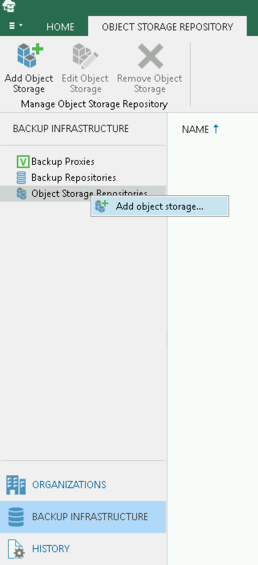- Sort Score
- Result 10 results
- Languages All
Results 1 - 10 of 182 for step3 (0.02 sec)
-
src/test/java/org/codelibs/opensearch/extension/analysis/FlexiblePorterStemFilterFactory.java
super(indexSettings, name, settings); step1 = settings.getAsBoolean("step1", true); step2 = settings.getAsBoolean("step2", true); step3 = settings.getAsBoolean("step3", true); step4 = settings.getAsBoolean("step4", true); step5 = settings.getAsBoolean("step5", true); step6 = settings.getAsBoolean("step6", true); } @Override
Registered: Fri Sep 19 09:08:11 UTC 2025 - Last Modified: Sat Mar 15 06:51:20 UTC 2025 - 1.9K bytes - Viewed (0) -
docs/en/docs/tutorial/security/first-steps.md
# Security - First Steps { #security-first-steps } Let's imagine that you have your **backend** API in some domain. And you have a **frontend** in another domain or in a different path of the same domain (or in a mobile application). And you want to have a way for the frontend to authenticate with the backend, using a **username** and **password**. We can use **OAuth2** to build that with **FastAPI**.Registered: Sun Sep 07 07:19:17 UTC 2025 - Last Modified: Sun Aug 31 09:15:41 UTC 2025 - 8.4K bytes - Viewed (0) -
.github/workflows/mint.yml
TAG="quay.io/minio/minio:${{ steps.vars.outputs.sha_short }}" make docker - name: multipart uploads test run: | ${GITHUB_WORKSPACE}/.github/workflows/multipart/migrate.sh "${{ steps.vars.outputs.sha_short }}" - name: compress and encrypt run: | ${GITHUB_WORKSPACE}/.github/workflows/run-mint.sh "compress-encrypt" "minio" "minio123" "${{ steps.vars.outputs.sha_short }}"Registered: Sun Sep 07 19:28:11 UTC 2025 - Last Modified: Wed Apr 09 14:28:39 UTC 2025 - 2.9K bytes - Viewed (0) -
.github/workflows/ci.yml
include: - os: windows-latest java: 21 root-pom: pom.xml runs-on: ${{ matrix.os }} env: ROOT_POM: ${{ matrix.root-pom }} steps: # Cancel any previous runs for the same branch that are still running. - name: 'Cancel previous runs' uses: styfle/cancel-workflow-action@85880fa0301c86cca9da44039ee3bb12d3bedbfa # 0.12.1 with:Registered: Fri Sep 05 12:43:10 UTC 2025 - Last Modified: Wed Sep 03 19:19:31 UTC 2025 - 4.7K bytes - Viewed (0) -
.teamcity/src/main/kotlin/configurations/GradleBuildConfigurationDefaults.kt
maxParallelForks: String = "%maxParallelForks%", extraSteps: BuildSteps.() -> Unit = {}, // the steps after runner steps preSteps: BuildSteps.() -> Unit = {}, // the steps before runner steps ) { buildType.applyDefaultSettings(os, timeout = timeout, buildJvm = buildJvm, arch = arch) buildType.steps { preSteps() }Registered: Wed Sep 10 11:36:15 UTC 2025 - Last Modified: Wed Jun 11 12:58:05 UTC 2025 - 8.4K bytes - Viewed (0) -
.github/workflows/build-docs.yml
jobs: changes: runs-on: ubuntu-latest # Required permissions permissions: pull-requests: read # Set job outputs to values from filter step outputs: docs: ${{ steps.filter.outputs.docs }} steps: - uses: actions/checkout@v5 # For pull requests it's not necessary to checkout the code but for the main branch it is - uses: dorny/paths-filter@v3 id: filterRegistered: Sun Sep 07 07:19:17 UTC 2025 - Last Modified: Fri Aug 15 21:44:06 UTC 2025 - 4.1K bytes - Viewed (0) -
docs/integrations/veeam/README.md
 - Follow through the wizard as above for Veeam Backup and Replication as the steps are the same between both products - Under Backup Infrastructure -> Backup Repositories, right click and "Add Backup Repository"
Registered: Sun Sep 07 19:28:11 UTC 2025 - Last Modified: Tue Aug 12 18:20:36 UTC 2025 - 5.5K bytes - Viewed (0) -
docs/tls/kubernetes/README.md
```sh kubectl get secrets ``` You should see a secret named `tls-ssl-minio`. ## 3. Update deployment yaml file Whether you are planning to use Kubernetes StatefulSet or Kubernetes Deployment, the steps remain the same. If you're using certificates provided by a CA, add the below section in your yaml file under `spec.volumes[]` ```yaml volumes: - name: secret-volume secret:
Registered: Sun Sep 07 19:28:11 UTC 2025 - Last Modified: Tue Aug 12 18:20:36 UTC 2025 - 3K bytes - Viewed (0) -
docs/metrics/prometheus/alerts.md
Follow below steps to enable and use AlertManager. ## Deploy and start AlertManager Install Prometheus AlertManager from https://prometheus.io/download/ and create configuration as below ```yaml route: group_by: ['alertname'] group_wait: 30s group_interval: 5m repeat_interval: 1h receiver: 'web.hook' receivers: - name: 'web.hook' webhook_configs:
Registered: Sun Sep 07 19:28:11 UTC 2025 - Last Modified: Wed Apr 23 15:13:23 UTC 2025 - 4.4K bytes - Viewed (0) -
docs/em/docs/tutorial/security/first-steps.md
Sebastián Ramírez <******@****.***> 1731896744 +0100
Registered: Sun Sep 07 07:19:17 UTC 2025 - Last Modified: Mon Nov 18 02:25:44 UTC 2024 - 6.7K bytes - Viewed (0)